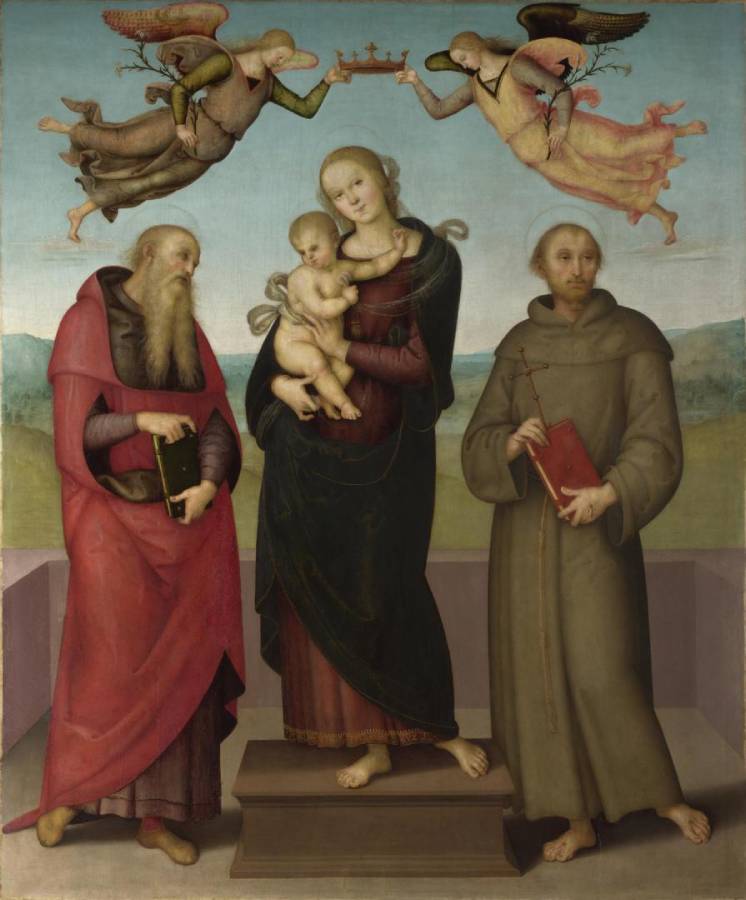Perugino (c.1446-1523)
Madonna di Loreto (The Virgin and Child with Saints Jerome and Francis)
probably c.1507–1515
Oil on wood, 185.5 x 152.5 cm
National Gallery, London
This painting stood above the altar in a chapel built to commemorate a local carpenter, Giovanni di Matteo di Giorgio Schiavone, in the church of Santa Maria dei Servi in Perugia. Giovanni left instructions in his will that the proceeds of the sale of his workshop should go towards the chapel, which he wanted Perugino to paint with a mural showing the Virgin Mary and Christ Child with Saints Jerome and Francis.
When Giovanni died in 1507, the executors of his will did hire Perugino, but instructed him to make a panel painting instead. The contract, which survives, specified that it should show: ‘the glorious Virgin with her Son standing, similar to that of Loreto, with figures of the Blessed Jerome as Cardinal and Saint Francis with the stigmata.’ Perugino stuck to the brief, painting Jerome in the red robes of a cardinal and Francis with blood pouring from the wound on his left hand.
The ‘glorious Virgin’ referred to a painted wooden sculpture in Loreto, a town on the coast of the Marche region. It was of the standing Virgin holding the Christ Child, both wearing crowns, and was, at the time, a focus of devotion. Churches in the surrounding area commissioned copies, sometimes with slight variations. Perugino’s painted version seems to resemble a sculpture in the church of Sant‘Agostino near Santa Maria dei Servi, which he probably knew because he had made altarpieces for the church. The angels hovering above, about to crown the Virgin, don’t come from the sculpted version, but from prints that illustrated books devoted to Mary, which were popular from the late fifteenth century.
Perugino was allowed four months to complete the work and the contract specified that he was to use ‘fine colours’ and ‘gold ornaments’. It also stated that Perugino himself must complete the work. The budget for the work was, however, low, which might explain why its quality is nowhere near that of his earlier panels for the Certosa altarpiece. Perhaps – despite the contract – he delegated it to one of the assistants. Infrared reflectography reveals that the underdrawing is very simple and that very few changes have been made during the painting stage, evidence which usually suggests an assistant slavishly following his master’s designs. Technical analysis has shown that the two floating angels are made from the same design, which has been reversed – the underdrawing of one is the mirror image of the other.
Some parts – like Christ and Jerome’s heads, and the atmospheric, soft landscape – look more like Perugino’s work. Perugino might have made it himself, working quickly and reusing existing designs and drawings – common practice for him at the end of his career. As a result he received fewer commissions, while his pupil Raphael overtook his fame. (NG)
See also:
• Fancelli, Chiara (c.1470-1541) | Loreto (Italia)
